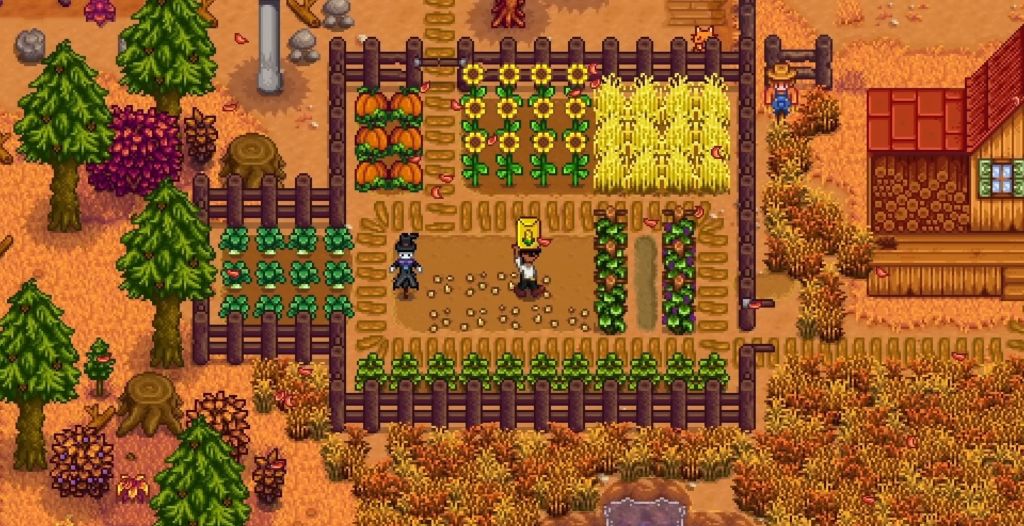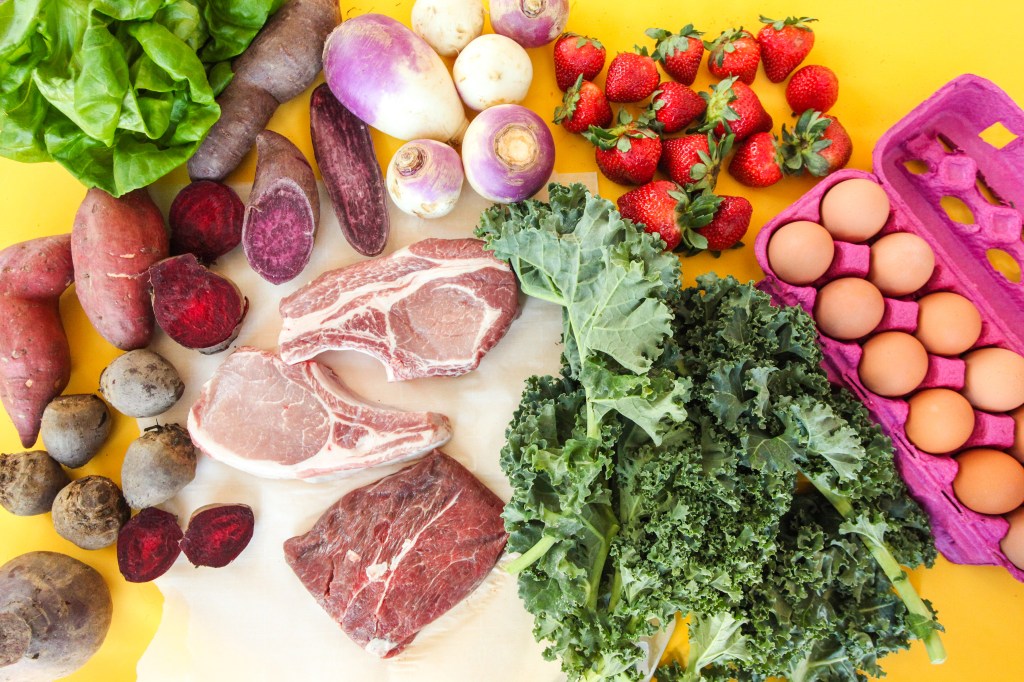The combination of long lines at grocery stores, collective anxiety around COVID-19, and nationwide lockdowns have driven people across the U.S. into a panic over how they’ll get their food. Grocery stores lay bare after every step of the food distribution system has been disrupted. Some shoppers have opted, instead, for big box stores or online grocery services—but many of those have been proven by the pandemic to be imperfect and flawed solutions. So, as the systems we’ve grown to depend on crumble before us, many are considering more sustainable options.
Much of this, so far, has looked like self-sufficiency. On the smallest scale, an effort to regrow vegetables from scraps is growing across social media. Larger efforts like the Victory Garden movement that began during World War I are also on the rise, leading to upsticks in seed sales. As the demand for store-bought eggs rises, so has the interest in baby chickens as more people now entertain the idea of raising hens. So many people are baking that yeast and flour are continually out of stock. But despite a desire to diverge from the sketchy corporations that run our world, not everyone is a green thumb, an aspiring chicken parent, or a bread baker.
Videos by VICE
Instead, sustainability might look like supporting smaller systems of production. With restaurants closed, farmers are dealing with unpredictable demand; some are dumping milk or destroying eggs because large-scale operations no longer need them. Cheesemakers are hurting, as are oyster farmers, fishermen, and just about everyone across the food industry. By giving our money and support to producers whose coffers aren’t quite so full, we can share our resources in a way that feels more ethical. CSAs—which allow you to work directly with smaller food producers—are one way to get started.
What is CSA?
“CSA,” a term you’ve likely heard from friends you might have once called “crunchy,” stands for “community supported agriculture.” It’s a way of supporting farmers or food producers directly, without going through the middle man of a specialty market or grocery store. Not only do they provide a way of getting farm-fresh produce in areas where farms might not be immediately accessible, but they help sustain smaller businesses who operate with tight margins.
How does a CSA work?
A CSA is a direct partnership with a food producer that typically involves paying a lump sum upfront as “shares” to help fund the farm’s efforts during the growing season. The idea is that the influx of money keeps the farm running, and once the farm harvests its crops, you get your money in the form of seasonal produce on a weekly basis. Unlike picking and choosing from the options at a farmers’ market stand, a CSA or farm “share” is like a subscription box of whatever is seasonal. Many offer different sizes in order to accommodate different households.
Is a CSA subscription just for vegetables?
Nope! Produce is probably the most common, but you can get all types of food through a CSA model. While the options will differ depending on your area, there are CSA-style models for meat, fish, bread, mushrooms, cheese, eggs, and even flowers. And many farms offer combinations of those.
How do I find a CSA near me?
Local Harvest runs a database that can help you find not just CSAs but also farms and farmers’ markets near you. The USDA also has its own CSA directory. In both, you just enter your zip code and see what’s nearby. Distance matters, since you often have to pick up your share, though some CSA programs do offer delivery (this may also change as the pandemic continues into the summer). You can also try Yelp or a good old Google search.
While some, like Local Roots, offer rolling subscriptions during the growing season, many others require signing up at the beginning of the season.
Do I know what I’m getting in a CSA?
Most of the time, not exactly. While most of us have gotten used to the grocery store model of being able to get whatever we want whenever we want it, produce from a CSA is dependent on both your season and your region. That means you’re probably not getting avocados in a CSA share in Pennsylvania, and you can’t exactly say, “I want perfect tomatoes in my share today,” if it’s early spring and the radishes are being harvested.
But think about it: People haven’t always eaten whatever produce they wanted flown in from places all over the world. Now’s your chance to get in touch with the seasons and simpler living. Plus, it’s an opportunity to try foods you wouldn’t otherwise buy. (Shishito peppers might seem daunting at the store, but getting them in your share is an excuse to experiment.) Some CSA providers, like the Brooklyn Grange, which cares for the MUNCHIES rooftop garden, do list sample shares of what you might expect at different parts of the season—though, again, it’s not a guarantee.
How do I cook with this mystery bag of CSA produce?
If you’re signing up for a CSA, especially a produce CSA, it’s not a bad idea to start the season with a vegetable-focused cookbook. Chef Joshua McFadden’s Six Seasons is a great guide for using vegetables at all stages of the growing season, while farmer and cook Abra Berens’ Ruffage: A Practical Guide to Vegetables offers 100+ vegetable recipes along with guidance on hundreds of ways to riff on those recipes.
If all else fails, remember that Google is your friend—plenty of people have received way too much kohlrabi in their CSA share and then suddenly had to figure out how to use it. Or hey, we love this pickled kohlrabi recipe, and the MUNCHIES “Dirty Work” series is a guide on cooking with whatever looks good in the garden.
What are the potential downsides of signing up for a CSA?
Depending on where you currently grocery shop and how much you buy, a CSA could be more expensive than what you’re currently getting and you might still have to supplement your share with items from a store or other purveyor. Alas, if you’ve found yourself taking issue with the shady ethics of chain stores where prices are low, paying more for your food tends to be part of those more sustainable solutions.
A CSA also assumes a bit more risk than typical grocery shopping, which guarantees that almost everything you want will be at the store. As Local Harvest points out, nature can be unpredictable, and catastrophe could hit the farm or the crops you were most excited about. Instead of getting something standard, you can end up with vegetables you’re not familiar with and don’t quite know how to use.
There are also some potential barriers to signing up for a CSA. Although some farms offer payment plans, typically they require a large upfront payment. Obviously, paying a few hundred dollars at once—even if it means vegetables for a summer—isn’t feasible for everyone. You’ll also need the time and resources to pick-up your share from the designated pick-up point every week. That means that if you’ll be traveling a lot during the harvest season or have an unpredictable schedule, a CSA might not be the most cost-effective option for you.
How do I know if a CSA is right for me?
If the idea of knowing where your food comes from sounds appealing, then a CSA is worth considering. Unlike simply picking up grocery store tomatoes, a CSA allows you to know not only where your food comes from but also the people producing your food—you’re picking up from them weekly, after all! You get the sense that you’re supporting actual people, as opposed to a faceless corporation selling food through a grocery store chain, and you know your money is affecting people within your community or close to it.
So that’s it: You don’t have to suddenly grow everything yourself, but if our current global circumstance have you feeling a little weird about continuing to funnel your money into Jeff Bezos’s pockets, remember that alternatives exist. Small food producers are out there and they need our love—this is one way to help them keep going, while feeding yourself too.
VICE is committed to ongoing coverage of the global climate crisis. Read all of our Earth Day 2020 coverage here, and more of our climate change coverage here .
More
From VICE
-

Screenshot: ConcernedApe -

Collage by VICE -

Collage by VICE -

Collage by VICE
